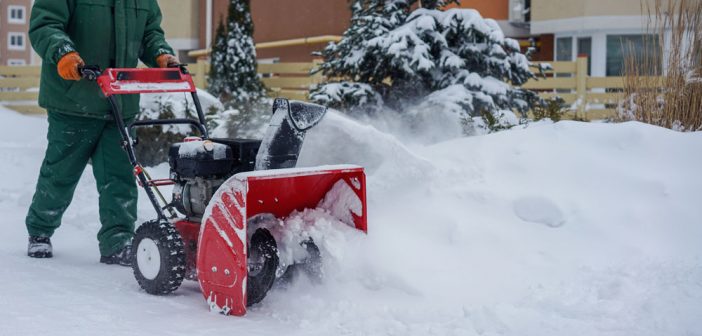When it comes time to purchase a snow blower, it can quickly become a real challenge. A salesperson may talk to you about single, two and three-stage snow blowers. Each of them will come in different widths. They will also have a variety of different features, including several high-end features available. Should you have never previously purchased a snowblower, it can be overwhelming. You should be aware of certain things when you decide it is the right time to purchase a snow blower.
1. Start Looking Early
Most retailers are completely stocked with the latest models of snowblowers by the beginning of October. Some retailers may even offer pre-season sales. Many times, these sales offer discounts of up to 20 percent off or more. This all changes when the snow begins to fall. After this happens, it is possible for stores to quickly sell out of some of their most popular models and it could take time for retailers to restock. It is wise to begin snow blower shopping late in September or during the beginning of October. This is the best time to get the right snow blower and take advantage of some potential sales.
2. Single-Stage Snow Blower
These machines are designed with a single high-speed auger. It will scrape snow off the ground and quickly move it to the discharge chute. A single-stage snow blower can handle up to 6 inches of snowfall. It works well on driveways that are approximately two cars wide and two cars long. These snow blowers can break up and remove compacted snow from snow plows. This must be done before the snow freezes.
3. Two-Stage Snow Blower
There is a two-stage snow blower that operates with a slow turning corkscrew-like auger. It obtains snow and takes it to the center of its housing. Snow is then forced into a high-speed impeller. The snow is then pushed out of its chute. These machines can handle a snow depth of up to 12 inches. It is effective on larger driveways, three cars long by two cars wide. Most two-stage snow blowers are self-propelled and have multiple forward speeds. It is easier for these machines to remove compacted snow and ice because its auger is larger than a single-stage machine. It can handle more snow in less time.
4. Three-Stage Snow Blower
These snow blowers have slow turning augers that obtain snow and quickly move it to the center of its housing. It is designed to move snow into its impeller at a faster rate than a two-stage machine. A three-stage snow blower can move the most snow in the least amount of time. It is estimated this machine can move heavy snow 50 percent quicker than a two-stage machine. It can move depths of heavy snow up to 18 inches on driveways four cars long by three cars wide.
5. Driveway Slope And Construction
Should you have a driveway that is small, flat and made of asphalt or concrete, a single-stage snowblower could be the best choice. They are not good to use on driveways that are made of dirt, gravel and have a steep slope. They operate with rubber-tipped augers used to scrape the snow. This type of driveway could destroy the rubber augers of a single-stage snowblower. Once this happens, a snowblower could throw gravel all over the lawn. A steep-sloped driveway will make a single-stage snowblower work harder than a model that is self-propelled.
6. Power Steering
This feature will enable you to easily make a sharp turn. Some machines have power steering controls that enable a snow blower to quickly turn 180°.
7. Auto Chute Rotation
It is possible to change a snow blower’s chute in a different direction when starting a new path. A mechanism for chute rotation can be just a crank on the lower-end models. Higher-end models have a cable and a chute rotation mechanism that is electronically operated. Some come with a chute that has a one-hand pistol-grip joystick.
8. Airless Tires
Air-filled tires can be trouble. They often need refilling and repairs. If one tire has less air than the other, a snow blower will pull to one side. Airless tires never go flat and eliminate the problems associated with tires that use air.
9. Plastic is Better Than Steel
Plastic discharge chutes last longer and work better than steel chutes. Plastic chutes are designed to be slippery and don’t jam or stick easily. It won’t crack in cold weather.
10. Gas-Powered Snow Blower
If someone uses stale gas in their snow blower, it could cause the machine to experience small engine problems. It is recommended you use a fuel stabilizer and add it to fresh gas as part of off-season storage. These engines also require annual maintenance.
11. Electric Start
Gasoline engines can be tricky in cold weather. If a gas-powered snow blower if flooded, it can take you over 19 strong rope pulls to clear the flood. Electric-start snow blowers can be plugged into an AC outlet and be started with the push of a button.
12. Electric Snow Blowers
These machines are great for light snowfall in a smaller area. These are favorites of people who don’t want to deal with the annual oil changes and more that go with a gas-powered snow blower. They require a winter-rated extension cord that is heavy-duty. Specific snow removal patterns need to be followed.
13. Battery-Powered Snow Blowers
These are growing in popularity. They eliminate the hassle of annual maintenance requirements of a gas-powered engine and no long extension cord is needed for them to work. They work best with small to average driveways with medium or less snowfall depth. It can run for 30 minutes on a single charge and this usually enough.
14. Try Snow Blower
Take time to get familiar with a snow blower and how it works; knowing the starting procedure and getting comfortable with its controls are important. See if it is possible to use a snow blower before purchasing it and prior to it snowing. This will help you to get comfortable with your purchase.
15. Before Purchasing
Know how much snow falls in the area where the snow blower will be used. Determine if it is usually light or heavy snow. Know the surface where the snowblower will be used. Make a plan on how to handle maintenance and repairs. It’s also important to know how far a snow blower will throw the snow to avoid problems with neighbors and more.
Once you have determined your need for a snow blower, you should do some research. This is an important piece of equipment that will be an investment designed to last for a long time. Read the buyer’s guide to have a better understanding about a specific snow blower and if it a good fit for your situation.









